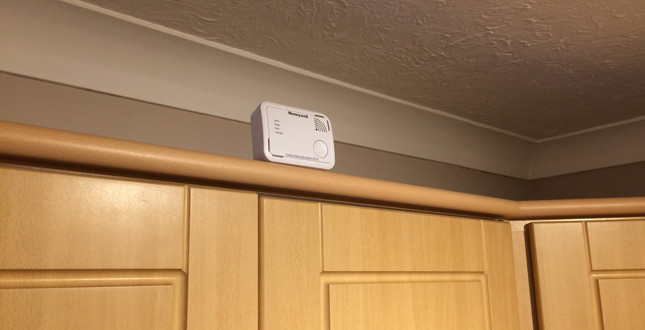

Homeowners are becoming increasingly aware of the dangers of smoke and carbon monoxide in their homes, but it is important for installers to make use of the latest technology to keep their customers safe, says Adrian Keats.
Home safety became big news in 2017. The Grenfell Tower tragedy has raised important questions over fire safety in high rise buildings and a new report shows that, despite regular campaigning to raise awareness, carbon monoxide poisoning in children is actually on the increase.
Carbon monoxide is a silent killer, giving families little time to evacuate their home in the case of a leak. Fire and smoke continue to be deadly in UK homes, with more than 250 deaths attributed to domestic fires in 2016/17.
For installers, this has presented an opportunity to talk to customers about the dangers in their homes, particularly when they are already in a property completing a boiler replacement or service.
Thankfully, technological innovations have made it easier than ever before for installers to ensure homeowners are safe, meaning that correctly sited home safety alarms now give homeowners more time than ever before to evacuate should there be an incident.
Interconnected alarms are now becoming much more commonplace, sounding all the alarms within a dwelling whenever an activation occurs. This means, for example, that homeowners upstairs can be alerted to problems in the kitchen, even if they are out of earshot of the alarm that originally detected the problem.
This is particularly important when you consider the number of alarms that are necessary in a home – guidance recommends that smoke alarms are positioned within 1.5m of the entrance to all habitable rooms and any cupboards that pose a fire risk. Carbon monoxide (CO) alarms, meanwhile, should be placed in any room containing a fuel burning appliance, including gas boilers, wood burners and cookers, but also in any bedrooms which may be located above these areas.
Interconnected alarms are also ideal for small apartment buildings of between 10 and 20 flats. This is because they can notify tenants of any cause for alarm in other dwellings without them relying on being alerted to the dangers by occupants of other flats.
Correct maintenance of alarms is also vital. Some alarms now come with apps that allow them to be monitored for proper maintenance – such as checking the status of the battery, or the last time an activation occurred. This creates a vital paper trail for rented properties, but can be useful in privately owned homes too.
It’s can be an excellent way for installers to maintain regular contact with their customer, bringing in a little extra income while continuing to ensure they are safe.
Honeywell’s interconnected X Series CO alarm, for example, comes with an Alarm Scan app which enables the wireless data download of information straight from the alarm to a smart phone or tablet and features downloadable reports and provides a full history of the alarm, which can be checked quickly and easily whenever you’re in a customer’s property.
And with home safety having been on the news agenda so prominently throughout 2017, systems such as there are vitally important in helping to ensure that homeowners are safe whenever they are in their property.
Adrian Keats is National Account Manager at Honeywell Analytics
If you'd like to keep up-to-date with the latest developments in the heating and plumbing industry, why not subscribe to our weekly newsletters? Just click the button below and you can ensure all the latest industry news and new product information lands in your inbox every week.